|
|
The Spencer Family Web |
||||||||||||||||||
|
A dream come true the H-112 |
||||||||||||||||||
|
I never actually finished building the ULO510 because I had a stroke of luck, Honeywell had produced a computer called the H-112 which was, well to be kind, not very successful and a training machine was being sold for scrap. Guess who bought it… Yes I was the owner of my own computer. It had lots of switches and flashing lights, very impressive, but no other means of getting anything much into or out of it. |
||||||||||||||||||
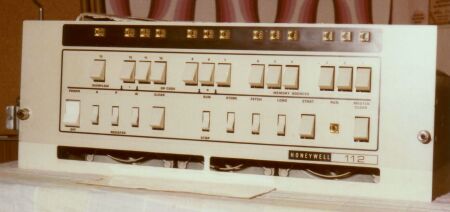 |
||||||||||||||||||
|
In those days (the late 60's/Early 70's) there were no video monitors and hard-disks were about the size of a large cooker and needed 3 phase mains (yes I did consider one – but don't tell Julie!!). At that time the people who worked in the computer industry were either Engineers/Technicians who understood the hardware but knew nothing about programming or Programmers and System Analysts who understood the software/computer languages but nothing about how the hardware worked. Now to build and program a home computer you needed to be able to do both or to get into partnership with someone who had the missing skills. Now I was in a fairly unusual position because I was teaching both computer hardware to engineers and software to programmers, so at least I had a head start. I rebuilt the H-112, designed my own interfaces, wrote my own mini operating system, my own assembler (keying in over 4000 instructions of 12 bits each on those switches (plus corrections), my index finger has never recovered) and my own 'Extended Tiny Basic' interpreter. Bought an old Creed 7ERP telex machine, connected it to my home built interface and there I was, one of less than 10 people in Europe who had a personal computer and the end of the living room became the '112 Computer Centre'…… I even had to make a hardboard cover with noise dampening carpet tiles on the inside to reduce the sound of the 7ERP to a level where you could hear if you shouted (quite loudly)…. |
||||||||||||||||||
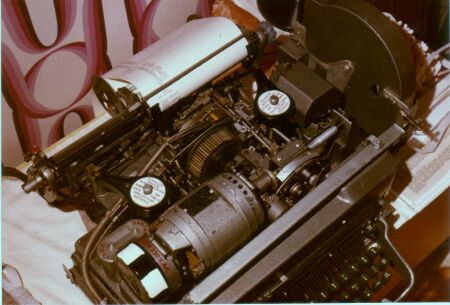 |
||||||||||||||||||
|
But let's take a look at that H-112…. It was built with DTL logic (that's diode/transistor logic) which ran from 6Volts rather than the more common TTL (transistor, transistor logic) and 5 volts used later in chips like the 7400 series. But for the time this machine was compact… I mean it fitted on a table top and didn't take up racks and racks of space. The connections between the logic packs were made using wire wrap, so I had to buy a number of wire wrap tools to build my hardware extensions. Wire wrap is a system where a bared wire is wrapped 4 or 5 times around a pin to make a connection and no solder is used. The memory was 'Ferrite core' and had a 1.6microsecond cycle time. Pretty fast by home computer standards and I had 8KW (Kiloword – 12 bit words) of it. Which was again a pretty large memory in those days where even commercial machines rarely had more than 32 - 64KB. |
||||||||||||||||||
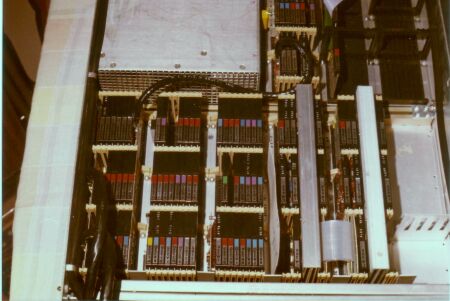 |
||||||||||||||||||
|
The view from above shows the power supply at the rear left, to the right of that are my home designed interfaces for the 7ERP keyboard/printer/paper tape punch with it's 5 bit Baudot code rather than 8 bit Ascii and they also drove my Creed paper tape reader plus up to three cassette tapes which could all be started and stopped by the computer. One of the cassettes working at over 3300 bits/second which was 10 times faster than many on the micro computers sold in later years. In front of the power supply are 3 rows of logic packs which are the central processing unit and to the front right the logic and 4KW ferrite core units of the two 4K memory modules. |
||||||||||||||||||
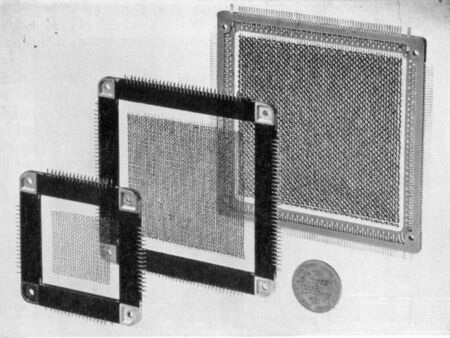 |
||||||||||||||||||
|
Ferrite core memory isn't seen any more but it consisted of tiny circles of ferrite with wires running through them. They were written by passing current through X and Y wires which magnetized the cores where you wanted a '1'. Those cores which were to contain a zero were prevented from flipping by passing a current in the opposite direction on an inhibit wire. To read the data, current was sent again through the X and Y wires to flip the cores to zero and those which contained a '1' would flip and generate a current in a wire called a sense wire while those that contained a zero did nothing. This of course put all the cores in that word back to zero so you had to rewrite the information to put the '1's back in again. This was called the cycle time of the memory and included both the read and the rewrite half of the cycle……..I know it's a bit complicated but it worked and it did have one big advantage over modern RAM chips, when you switched off the power to the machine nothing was lost the program and data remained in the ferrite core memory until you switched it back on again. This was all good news when your program was over 4000 words long (12 bits/word) and you were loading it from a creed paper tape reader using 5 unit punched tape at 50 Bauds, that works out at about 2 Words/Second I could load... Time for tea.... |
||||||||||||||||||
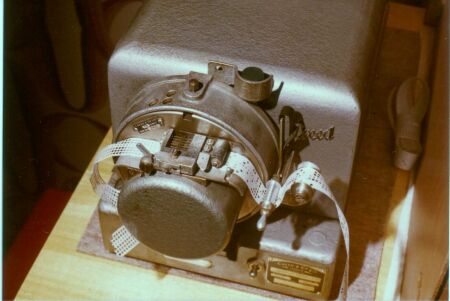 |
||||||||||||||||||
|
and what happened to the H112.... Well in the late 70's a visit to the states resulted in a SWTP keyboard kit and a Digital Group graphic card with an 'astounding' 12 lines of 32 characters replacing the Creed 7ERP and in the early 80's the micro computer market was underway in Europe and I retired the H-112 and moved on to micros, but that's another story....And the 112 well I still have it but I'm sure over a quarter of a century later that if I switched it on...the last program I stored in there would still be waiting to run......... |
||||||||||||||||||
|
A new Chapter for the H-112 |
||||||||||||||||||
|
[Home] [Ian and Julie] [Family News] [Hobbies] [Colin's Gallery] [Family Funnies] [Bits'n Pieces] [RAIBC] [Downloads] [Impressum] |






